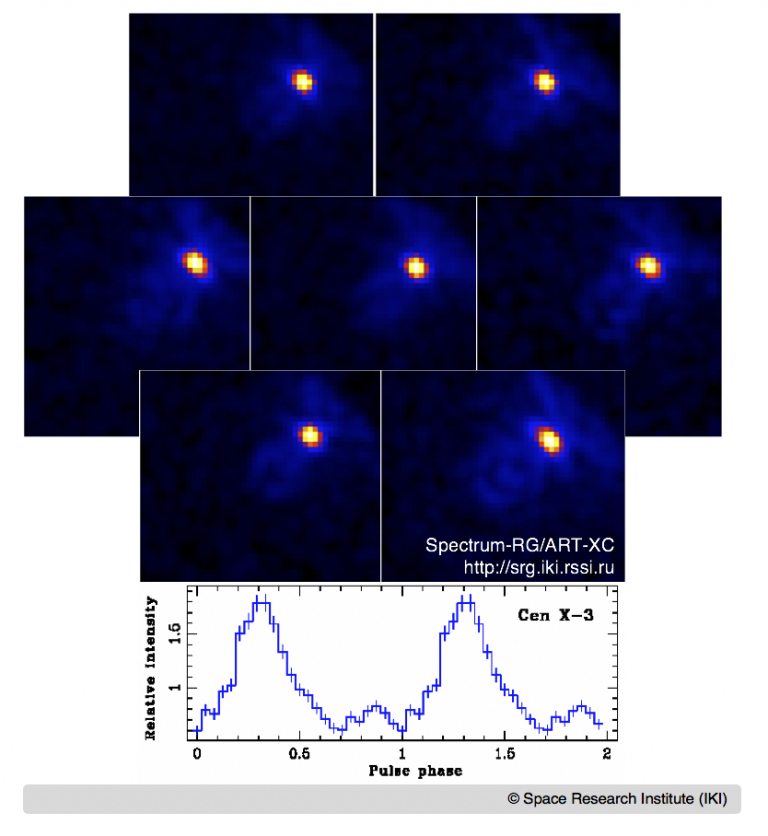
 Credit: IKI
Credit: IKI
Seven First Lights of ART-XC
One of the most exciting times in the life of any astronomical observatory is achieving "first light", the first time a telescope produces an image of an astronomical object. For space-based observatories, this can be a time that's especially nerve-wracking, given the remote nature of the science and the fact that it can be difficult to address problems in deep space. As capabilities grow, and observatories are placed farther from earth, problems encountered are ever harder to resolve. The Spektr-RG observatory (or SRG as it's more commonly known) is a Russian-German X-ray observatory, launched on July 13, and currently on a journey to its final staging point, a region of precarious orbital stability in the earth-Sun system called "L2", about a million miles from earth along the earth-Sun line. Once it arrives at L2, SRG will survey the entire sky every six months over the next four years. SRG consists of two observing instruments. The Astronomical Roentgen Telescope X-ray Concentrator (ART-XC) instrument consists of 7 individual telescopes which will generate images of the X-ray sky in the energy band from 5 kilo-electronvolts up to 30 kilo-electronvolts, which is about 3 times higher in energy than most other imaging X-ray observatories, like Chandra, XMM-Newton and Swift. ART-XC was developed by the Russian Academy of Sciences' Space Research Institute, in cooperation with the Russian Federal Nuclear Centre; NASA's Marshall Space Flight Center provided ART-XC's X-Ray mirrors. The image above is the first light image from the 7 ART-XC telescopes, obtained on July 30, 2019. This image shows the well-known X-ray pulsar Cen X-3, a binary system in which a spinning neutron star (rotating once every 4.8 seconds) is in a 2-day orbit around Krzeminski's star, a massive star about 20 times the mass of the Sun. ART-XC can also measure the time variation of the observed X-rays, and the plot on the bottom of the image clearly shows the 4.8 second X-ray variation of the pulsar as measured by ART-XC.
eROSITA, developed by Germany's Max Planck Institute, is the second instrument on SRG, and is expected to achieve first light in the coming weeks.
Published: August 12, 2019
<
HEA Dictionary ● Archive
● Search HEAPOW
● Other Languages
● HEAPOW on Facebook
● Download all Images
● Education ● HEAD
>

Each week the HEASARC
brings you new, exciting and beautiful images from X-ray and Gamma ray
astronomy. Check back each week and be sure to check out the HEAPOW archive!
Page Author: Dr. Michael F. Corcoran
Last modified Tuesday, 27-Feb-2024 10:13:21 EST


